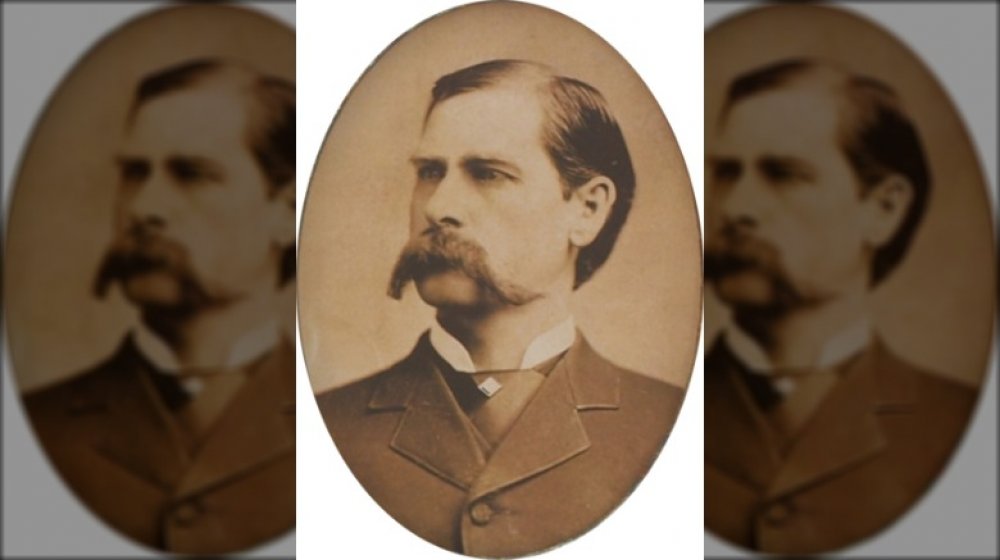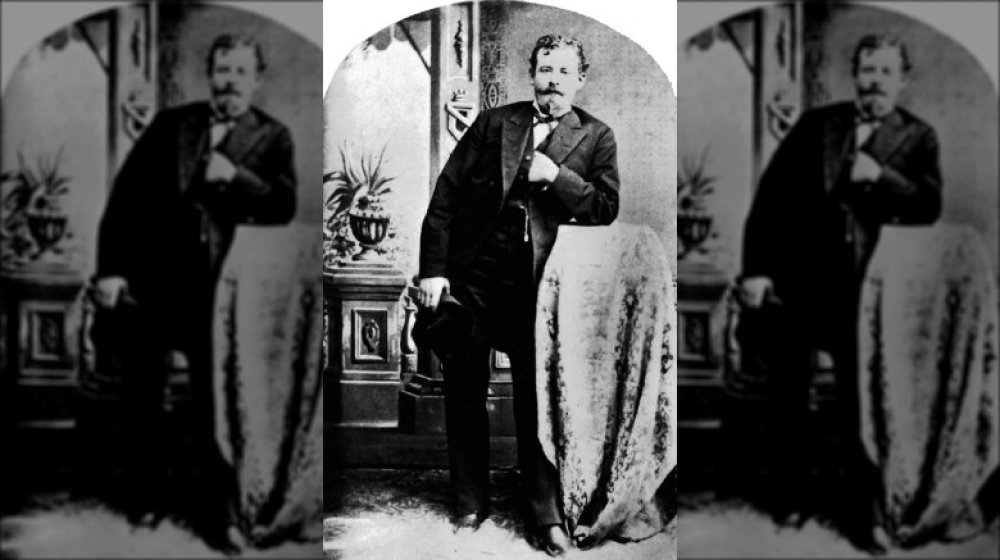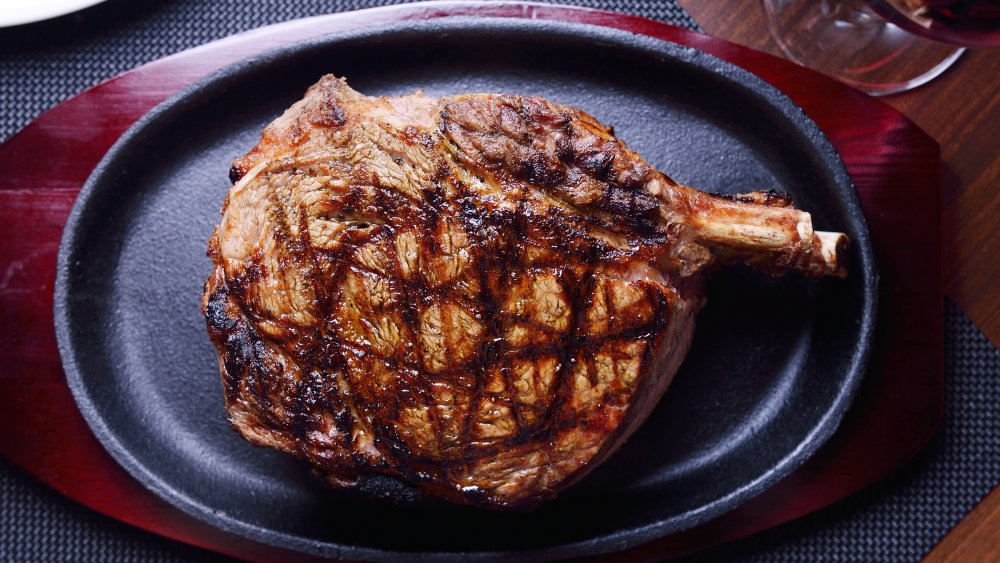What Wyatt Earp Typically Ate In A Day
Today we sometimes refer to it as the Wild West. That was certainly true in terms of the basic necessities of life. Things many of us take for granted today — access to common consumer goods, for instance — either had to be brought along or somehow fashioned. That included clothing, replacement parts for wagons, even replacement animals for the teams of oxen that were pulling the wagons. At least one list of helpful items to take comes to us, via PBS's series Frontier House. The list was written by Montana settler James Fergus for his wife in Minnesota. What to pack? In addition to clothing, guns, and ammunition, some of the foodstuffs she needed to purchase were 600 pounds of flour, 300 pounds of meat — distinct from 300 pounds of bacon and 200 pounds of ham — 50 pounds of beans, dried fruit, coffee, tea, rice, salt, sugar, and, specifically, raisins.
Wyatt Earp was born in 1848. To a great extent, what Wyatt ate depended very much on where he lived, and when. In towns, fresh food — baked goods, beef, lamb — coupled with some preserved or dried fruits. Bread was a staple, whether sourdough or something more elegant.
Ike Clanton: Restaurateur and rustler
Once towns began to be established, whether trading posts, mining boom towns, or cattle hubs, there were opportunities to resupply. Those same towns sometimes took root, though others dried up and blew away when the ore ran out, or the buffalo were depleted, or a railroad went out of business. Cowboys on trail drives saw their fare improve with the introduction of the chuck wagon with a full-time cook for the trip.
Life in some settlements was more primitive than others, and certainly Wyatt knew that first-hand. He'd driven wagons cross-country — his father moved the family large distances more than once — and he'd worked as a buffalo hunter and army scout. Professional hunters worked as quickly as possible — the more they killed, the more they earned — so fresh meat would have constituted a huge part of his diet. Army patrols would take their food with them, but that was as basic as possible: bacon; coffee; hardtack, a kind of dense cracker that traveled well and had practically no taste, as described by American Table.
Part of what a person might find in town depended on need — a boomtown might offer only the basics in terms of food and, well, entertainment. Cattle towns, like Dodge City, Kansas, where Wyatt served as a peace officer, had a thriving business community, both retail and the hospitality industry, catering to the needs of incoming cowboys.
And, of course, steak
Some towns prided themselves on mimicking their big-city cousins to the East. One standard of measurement was Delmonico's, a steakhouse in New York City. Western eateries tried their best to impress by offering such dishes as Eggs Benedict or Baked Alaska (originally called Florida Alaska, per True West Magazine). If you could go back to that time, you'd find restaurants all over the West carrying the name Delmonico's — not because there was a chain, but because the New York establishment was associated with sophisticated dining. One of those knock-offs was located in Tombstone, Arizona Territory.
By the time Earp arrived in Tombstone, in 1879, the town had only been in business for a few months, based on an 1877 silver strike. Nevertheless, it was growing, stretching its muscles and feeling cosmopolitan. Some business leaders aspired to an actual metropolis, the Southwest's answer to San Francisco, though once the silver ran out, so did the town's growth. There's nothing that suggests his common-law wife, Mattie Blaylock, was particularly domestic, and the couple lived in hotels for at least part of their time in the town. It stands to reason that Wyatt, as a successful and respectable gambler, probably ate out for most of his meals. Tombstone prided itself on offering a remarkably diverse bill of fare. Cowboy Ike Clanton even dabbled in the restaurant business for a time, according to True West, opening an eatery of his own in 1878 in nearby Tombstone Mills.
There was always room for ice cream
Most of the cafes and restaurants focused on sophisticated menus, eschewing the local ethnic fare as peasant food, though it was still available. Tombstone's Grand Hotel, for instance, was pretentious enough to print its menu in French for a time, with such delights as salmon (with Hollandaise sauce, mind you), gumbo, and various fruit pies for dessert. Wyatt could have enjoyed a fresh steak most any time, but as Marshall Trimble, Arizona's official historian, points out in True West, Tombstone also offered up such delicacies as oysters, shipped in from the coast; Chinese, French, and Italian cuisine; and "home-cooking" spots for simpler meals. There was also an abundance of saloons, of course, though Wyatt didn't drink. We do know for certain one thing he enjoyed regularly, per True West: a frequent stop at Tombstone's ice cream parlor, the Ice Cream Saloon. The Earps and Doc would have passed it on their way to the dustup near the O.K. Corral. Wyatt Earp: brave, courageous, and bold — with a sweet tooth.



